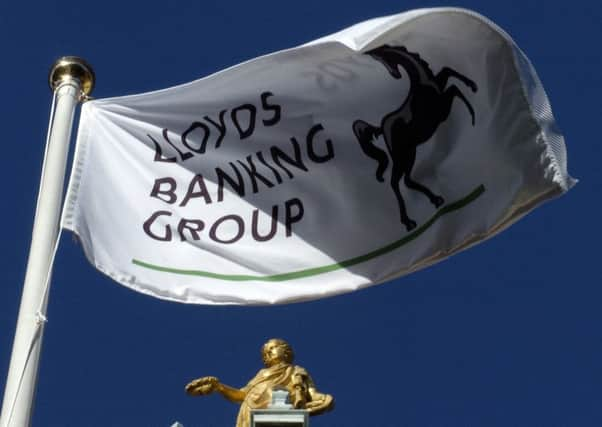Comment: Osborne takes Lloyds back to the future


The trading plan, which is exactly what it says on the tin, has so far raised £3.5 billion since it was launched last December, bringing the total recouped for the taxpayer to £10.5bn – more than half the size of the bank’s state bailout in 2008. Impressive.
The sale, normally in digestible chunks of 1 per cent or so in order to avoid volatility in the Lloyds share price, has also been beneficial publicity for the government, particularly given the extended delay in any sale of the state’s stake in Royal Bank of Scotland.
Advertisement
Hide AdAdvertisement
Hide AdPaying down the national debt is the Conservative government’s raison d’etre, and each stake sale reinforces that. Shares have been sold through the plan at an average of more than 80p, well ahead of the average taxpayer buy-in price to Lloyds of 73.6p.
In a more populist move, George Osborne flagged in the last Budget that there will also be a separate sale of the bank’s shares to private retail investors in the next 12 months.
It was shrewd to use sophisticated institutional investors to create an orderly sell-down of the stake before throwing it open to the general public.
In a case of Back to the Future, there are clear echoes of the Thatcherite retail privatisations of the 1980s.
The shares sales of British Gas and British Telecom proved hugely popular with the general public, and there is no reason why the Lloyds offer should not meet with a similar reception.
Under chief executive Antonio Horta-Osorio, profitability has clearly been restored at Lloyds, with that disastrous acquisition of HBOS in the 2008 financial crash increasingly receding in the group’s rear-view mirror.
Carefully structured and not over-priced, which is highly unlikely given the government’s sensitivity to public feelings about the taxpayer bailout of the bank, there is no reason shares in Lloyds should not be seen as pretty attractive to the man in the street as well as blue-chip institutions.
Recent successful stock market flotations of challenger banks such as TSB and Aldermore show a general investor appetite is returning for shares in well-run, simple, understandable players and Lloyds would seem to increasingly fit in that category.
Advertisement
Hide AdAdvertisement
Hide AdRBS has some way to go to be at the same stage of trading recovery, but it is getting there. In terms of investor sentiment, a successful Lloyds retail offer will not do RBS any harm either when UKFI eventually comes to reducing its 80 per cent state stake in that bank as well.
Where there’s smoke…
ON ONE level, British American Tobacco’s £395m acquisition of central European-based TDR will raise eyebrows. One of TDR’s key markets, Croatia, has total volumes of six billion cigarettes a year compared with the UK’s 40 billion.
But BAT is just following the smoke. central Europe is the one area of the continent still showing growth in these healthier times. And it is also a market where smokers are trading up to better margin cigarettes.
I don’t think we have seen the last of BAT’s acquisitive activity there.